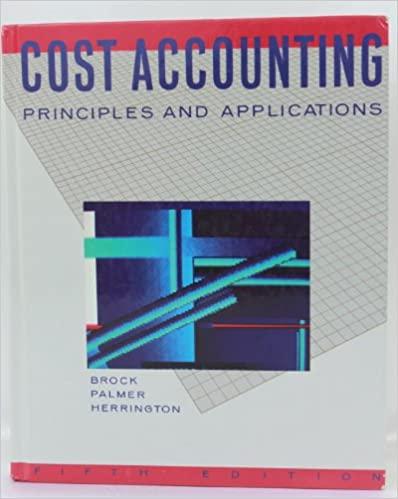Making journal entries for sales of a by-product when different accounting methods are used. The Abernathy Milling
Question:
Making journal entries for sales of a by-product when different accounting methods are used. The Abernathy Milling Company manufactures a single product—flour. In the Screening Department, husks and other impurities are removed and become a by-product.
Instructions 1. On March 1, 19X8, 21,000 pounds of the by-product recovered in the month of February were in storage waiting to be sold. These 21,000 pounds were sold on April 3 for $.07 per pound. Assume that no entry is made for the by-product until it is sold. Give the entry in general journal form to record the sale of 21,000 pounds for cash, using the following procedures:
a. The proceeds of the sale are treated as miscellaneous income.
b. The proceeds of the sale are treated as a reduction in the cost of the main product. (NOTE: Credit Work in Process—Screening Department 122))
2. During the month of March, an additional 19,500 pounds of the by-product were recovered. These were sold on May 1. Instead of following the procedures in Instruction 1, assume that the estimated sales value of the by-product is treated as a reduction in the cost of the main product when it is removed. Give the entries in general journal form to record the following:
a. Recovery of the 19,500 pounds in March, assuming an estimated value of
$.07 per pound. (Date the entry March 31, 19X8.)
b. Sale on credit of the 19,500 pounds on May 1 at $.075 per pound.
Step by Step Answer:

Cost Accounting Principles And Applications
ISBN: 9780070081529
5th Edition
Authors: Horace R. Brock





